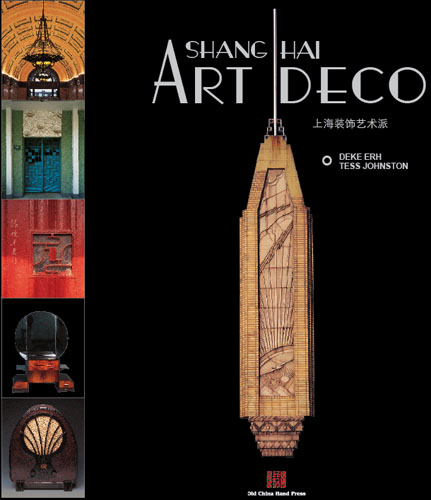

Art Deco, with its thrusting vertical elements, streamlined shapes and geometric ornamentation, captures the bold spirit of 1930s Shanghai that was rising, building and surging ahead as a splendid modern city. World connoisseurs of Art Deco pay their respects. Art Deco, which pays homage to the early 20th century "Machine Age," was once everywhere in Shanghai, overshadowing the neoclassical architecture emblematic of a colonial past. In the late 1920s, 30s and early 40s, creative architects and builders flooded the commercial and financial hub of Asia, a melting pot of ideas, cultures and styles.
The city was graced with glorious Art Deco specimens, many of them incorporating Chinese motifs together with Art Deco zigzags and curves. Traditional Chinese icons, such as waves, mountains and clouds, were given a geometric, Art Deco twist on facades and interiors. Shanghai also developed its own take on Art Deco furniture and decor; Art Deco influences can be seen in fashion, visual arts and in everyday items.
Many buildings are gone, but hundreds remain; some are decrepit but some are beauties.
Impressed by Shanghai's heritage, lovers of Art Deco will convene in Shanghai in 2015 for the World Congress on Art Deco.
Wm Patrick Cranley, an expert on Shanghai Art Deco and co-founder of Historic Shanghai, was instrumental in arranging for Shanghai to host the congress.
"It was not a hard sell," Cranley tells Shanghai Daily. "The members of Art Deco societies all over the world are really excited about the opportunity to see the Art Deco beauties here."
In the 1930s and 40s Shanghai was one of the most stylish and pioneering cities in the world and early Shanghailanders brought with them the most fashionable styles of the time, which included Art Deco.
The Fairmont Peace Hotel on the Bund, first built in 1929 as the Cathay Hotel, was the tallest building and a landmark at the time. It is mentioned in virtually every book about Shanghai in that period.
Its fa?ade is mainly composed of vertical lines, with delicately carved patterns in the middle and a mini-pyramid at the top.
Shanghai's Art Deco is unique because of its Oriental flavor and Chinese motifs integrated with the international style.
Cranley cites the Bank of China building on the Bund, which "incorporates openings on the fa?ade that reference traditional latticework windows and complex Chinese roof joinery executed in stone ...
"Not to mention the gorgeous mythical beasts guarding the entrance, who sport a decidedly Art Deco look."
Shanghai's unique lane neighborhoods (lilong) that fuse Western and Eastern styles also bear Art Deco influence. Some of the stone-gated houses (shikumen) are also quite Deco in their simplicity. Influences can be seen in general construction and interior details - the patterned flooring, the staircases and railings and sometimes even the framing of small windows.
Art Deco furniture, lamps, items of interior decor, glassware, tableware, ceramic vases and metal ashtrays are highly collectable these days, favored by many artists and expatriates, and are often quite expensive.
"The classic Shanghai calendar girl posters - depicting fashionable young ladies in their Art Deco-patterned qipao or Chinese sheath dresses - are a great source of information on Shanghai Art Deco fabric design," Cranley says.
In the course of renovation, many Art Deco residential interiors have been destroyed. Many Art Deco buildings were also torn down to make way for rapid economic development.
Cranley, who co-founded Historic Shanghai in 1998 with Tess Johnston and Tina Kanagaratnam, has seen rising awareness of the social, historic and aesthetic value of the city's historic buildings.